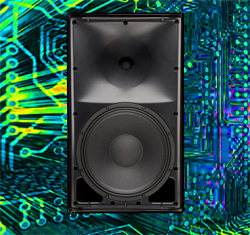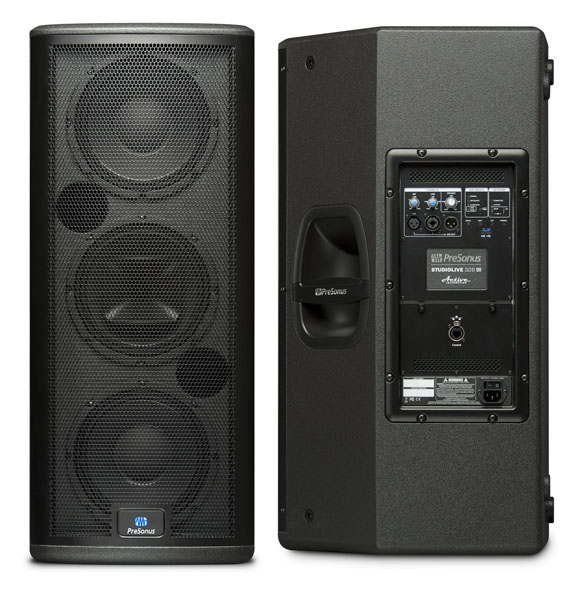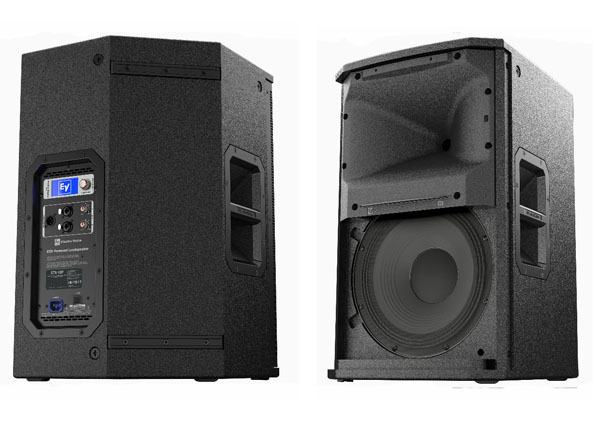
Also pushing the envelop, PreSonus recently unveiled the SL-Dante-SPK upgrade option to make the StudioLive AI-series the first Dante-enabled active loudspeakers on the market.
The three models in the series are 3-way designs, all with a coaxial 8-inch cone and 1.75-inch compression driver, and 15-inch, 12-inch and dual 8-inch woofer options. These systems are tri-amped (quad-amped in the dual-8 model), with class D amplifiers providing a combined 2,000 watts of power.
StudioLive AI-series loudspeakers include a USB Wi-Fi module to connect to SL Room Control software over a wireless network, and now with the new SL-Dante-SPK card this can be done on a Dante network.
SL Room Control is a system-configuration application for Mac OS X, Windows, and iPad that provides both individual and grouped loudspeaker control, and it includes a 31-band graphic EQ and an 8-band parametric EQ, muting, soloing, and level control, in addition to performance monitoring (over-temperature, click detection, and excursions).
Each full-range system has a combo XLR/TRS line input and an XLR mic input with an XMAX Class A mic preamp and 12-volt phantom power, as well as an XLR audio thruput.
The systems are pole-mountable and have two side handles, interlocking stacking, and M10 flypoints. Enclosures are plywood, and even with the additional components, size and weight are more than manageable; for example, the 12-inch model measures 24.8 x 19.5 x 16.4 inches (h x w x d) and weighs 62 pounds.
A Long Way
Based on my earlier experience at EV, I was especially surprised at this year’s NAMM when I saw the company’s latest ETX Series systems and realized just how far the technology has come. Rear-panel electronics include a 2-channel mic/line mixer and a pass-thru XLR connector, a push-to-enter rotary encoder, and a backlit LCD screen.
The menu accesses a variety of functions, ranging from input and output control, protection and limiting, and presets for music and spoken word applications, to EQ settings for where the system is positioned (on the floor as a monitor, on a stand, closely arrayed with other loudspeakers, or flown) and delay settings when used as a distributed system. The transducers and wave guides have also been redesigned.
At the top of a deep line of portable PA options from JBL is the new PRX700 Series that bridges the gap between smaller gig and multiple-loudspeaker pro applications. Two-way models are available with 10-, 12- and single and dual 15-inch woofers, and there’s also a three-way model and two accompanying sub options (15-inch and 18-inch).
All incorporate proprietary Differential Drive technology developed for the company’s flagship touring systems, along with class D amplification, a DSP input section, crossover, optimization, selectable system EQ, and a dbx Type IV limiter circuit.
The input panel includes two 1/4-inch/XLR-inch combo jacks with a mic/line and ground-lift switch, a pair of RCA connectors, and separate selector switches for both the local amp and pass-thru XLR. Cabinets have a pole-mount cup and integrated M10 rigging points.



